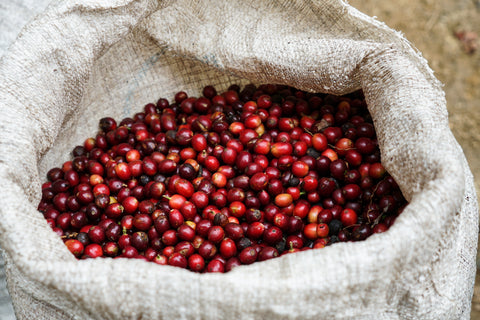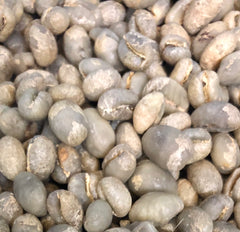Kibo and Mawenzi were the perfect neighbours until…Mawenzi decided to play a trick on Kibo; he threw away embers (which were a gift from Kibo) claiming they had burned out. Kibo got incredibly angry and decided to beat Mawenzi badly
This is one of the many legends and folklore stories weaving their way and surrounding Africa’s highest peak, Mount Kilimanjaro. This particular one ‘explains’ why the Mawenzi peak looks so badly degraded. It is also the reason why the peak is locally given the name: ‘the Scarred’.
Kilimanjaro, the roof of Africa, is not only one of the seven highest summits on the world but boosts being the highest free-standing mountain in the world. It is located in the northern border of Tanzania in East Africa. Kilimanjaro is a stratovolcano with three peaks, Kibo is dormant and could erupt again, whilst Mawenzi and Shira are extinct.
TANZANIA
Mount Kilimanjaro is not all about stories of angry gods and merciless neighbours. It is also where, yes, you are right, superb coffee (obviously!) is grown.
Tanzania has a few coffee growing regions; the major ones include Arusha, Pare (the high plateau between Lake Tanganyika and Lake Nyassa), Songea (where the Ruvuma river forms most of the southern border with Mozambique, and, Moshi (the slopes of Kilimanjaro).
You may have guessed that I am going to mostly talk about the coffee grown in the slopes of Mount Kilimanjaro.

Why?
Well, firstly, the Tanzanian coffee we currently have on offer is from here. As you know, we never chose coffees just for the sake of it; there is always a reason (in fact usually more than one) why we are attracted to a particular coffee and/or origin. Here I go!
The Moshi region on the hills of Mt. Kilimanjaro, is the oldest growing area in Tanzania for Arabica coffee. So, this is important because the growers in the region are established and have developed their long tradition of coffee producing. It also means they have a better infrastructure in order to provide better quality beans. All this, in turn, has enabled these growers to become recognised and build their reputation internationally.
Another important element is the altitude of where the coffee is grown. Most Tanzanian coffees are what we call Strictly High Grown (SHG) which is defined as coffee grown above 1200 masl, so high-altitude coffee. These are generally sought after because the coffee cherries’ development is much slower resulting in the nutrients being delivered more favourably and making the beans denser. More nutrients mean a more flavoursome coffee bean with more healthy organic compounds.
PEABERRY COFFEE BEANS
Tanzania along with its neighbouring Kenya and exotic Hawaii are also known for exporting Peaberry coffee.
Peaberry coffee beans are a natural mutation of the coffee beans inside the cherry. So, to understand how peaberry coffee beans are different to ‘normal’ ones, I am going to briefly go through the coffee cherry anatomy – apologies if I am stating the obvious for some!
The beans we brew are the processed and roasted seed of the coffee plant fruit, the coffee cherry. Inside the core of the cherry, under the various layers are two seeds. These seeds lay flat against each other, a bit like two halves of a peanut. So each one is slightly rounded on the one side and flat on the other.
 Occasionally, the cherry develops differently and as I said earlier, through a natural mutation in the plant, on this occasion, only one seed develops inside the cherry. This is called a Peaberry! Peaberry beans are rounder and denser, due to the extra space within the cherry. Peaberry beans are found in about 5% of the worlds coffee and they also usually constitute 5%-10% of a harvest.
Occasionally, the cherry develops differently and as I said earlier, through a natural mutation in the plant, on this occasion, only one seed develops inside the cherry. This is called a Peaberry! Peaberry beans are rounder and denser, due to the extra space within the cherry. Peaberry beans are found in about 5% of the worlds coffee and they also usually constitute 5%-10% of a harvest.
As mentioned above, Tanzania is known for its peaberry coffee. Peaberries are normally separated and sorted from the rest of the crop during harvest and they are often sold as a higher grade of coffee bean. As you can imagine, the process is quite labour intensive, which could also be contributing to its higher-grade status.
Peaberry coffee has a reputation of being sweeter tasting and considered to have a superior cup profile compared to ‘standard’ beans. However, there is a mixture of opinions on this for various reasons – and this is another blog post all together!! I will therefore keep it simple, peaberry coffee beans are special in way as they are not standard, they are labour intensive, they even react differently during the roasting process (mainly due to their round shape and their density) and, yes, one could argue that they have received more nutrients (due to them not sharing with the other half) but most importantly, if they are great quality just like a great quality ‘standard’ bean, then they will also taste superb!
OUR TANZANIAN PEABERRY COFFEE
So, from the Moshi region and slopes of Kilimanjaro we bring you our Yetu Tamu coffee which is exported by the Mambo Cooperative Union under the name Yetu Tamu which means ‘our coffee is sweet’ (and here is your clue and cue to have a try!)

The last twenty years has seen the average age of the farmer rise. This is because each of the 0.5 - 2 acres farm reduces as it gets divided amongst the next generation each time. This has meant younger people leaving the area. So, you can imagine, that at those high altitudes and slopes, transportation of the coffee to the processing plants by older farmers has become difficult.
This is where being a member of the cooperative really has value. When the cherries are picked, and the farmers are unable to take them to the local processing centre (CPU) the beans are pulped and fermented at home so as to avoid spoilage. The cooperative then offers the coffee for sale through the Tanzanian Coffee Board which in turn will distribute samples to exporting companies and auctions the lots. It is after the sale that the coffee is further milled by the facilities within the Mambo Cooperative and this is where any defects are removed, beans are sorted (hand-picked if required) and then bagged and shipped!
I hope I have given you a good read, a little insight into certain aspects of the coffee world and a bit more understanding!
Now, you can grab your Yetu Tamu Peaberry coffee beans and you can decide yourself on how superior they taste!
I for one, am a huge fan!
https://quantumroasters.co.uk/collections/africa/products/tanzania-coffee-yetu-tamu-peaberry


